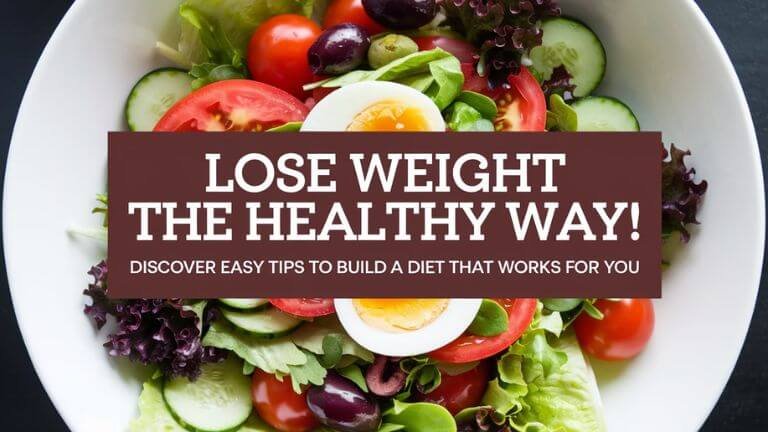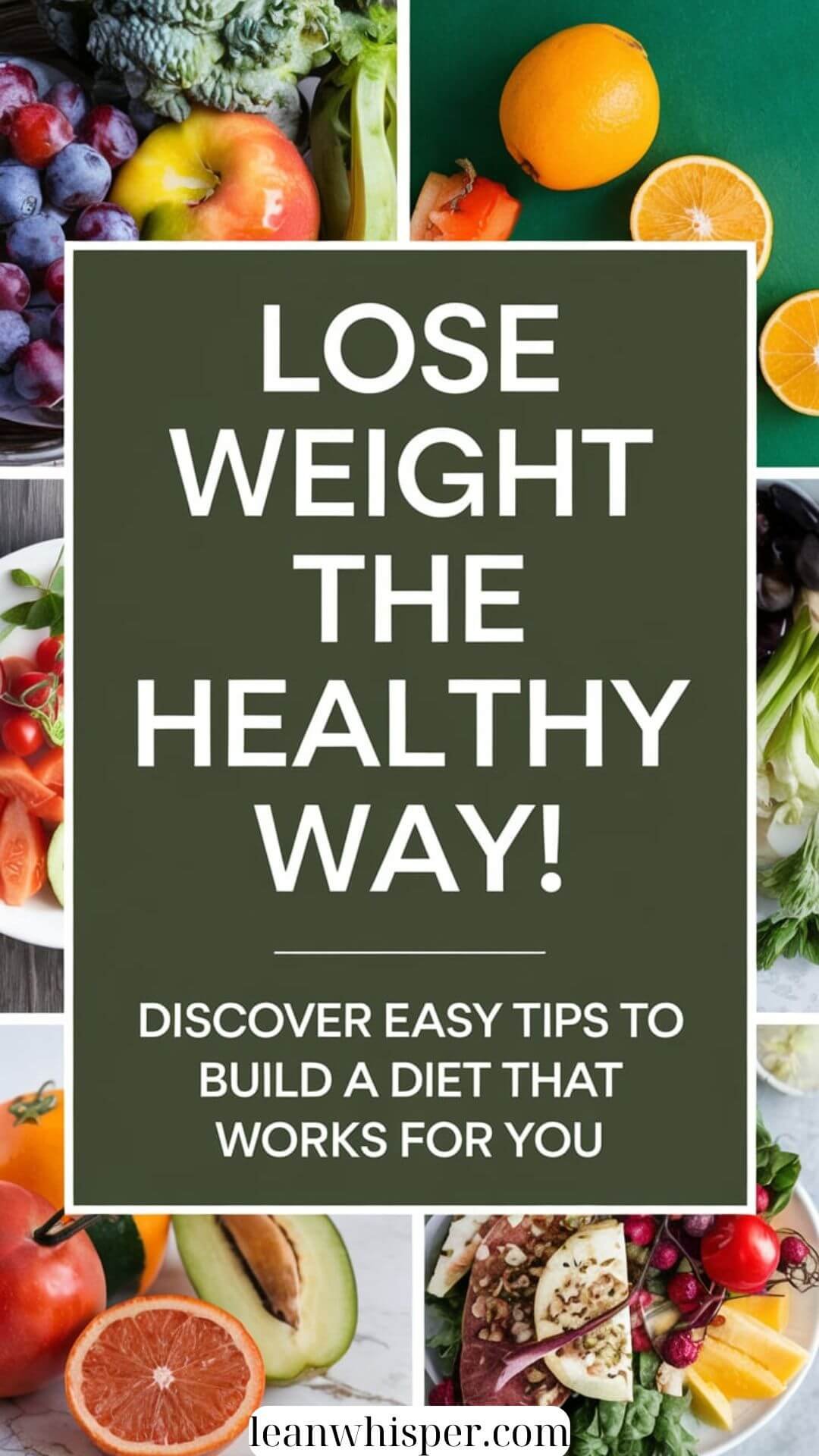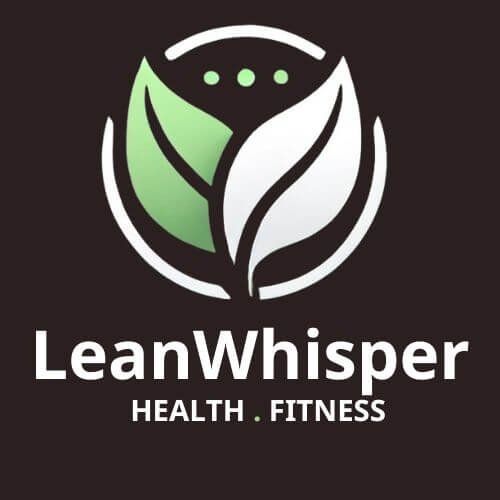How to Create a Healthy Diet for Losing Weight
Losing weight can feel overwhelming, especially with the endless advice about what to eat and what to avoid. But here’s some good news—a healthy diet doesn’t mean deprivation or unsustainable fads. By focusing on balanced, nutrient-rich meals and making small, consistent changes, you can achieve your weight loss goals while maintaining your health and energy.
This guide will walk you through the foundational steps to build a sustainable and effective weight loss plan. From understanding macronutrients to identifying key weight-loss-friendly foods, you’ll learn practical strategies to help you succeed.

Understanding the Basics of a Weight Loss Diet
The foundation of any weight loss plan begins with understanding how your body uses the food you eat. Two primary concepts will guide your efforts—macronutrients and calorie balance.
This post may contain affiliate links. Please read our disclosure here.
The Role of Macronutrients
Macronutrients are the building blocks of your diet, and each plays a unique role in your body’s health and function:
- Proteins: Vital for repairing tissues and building lean muscle, which boosts your metabolism. Include lean meats, tofu, beans, and Greek yogurt in your meals.
- Carbohydrates: Your body’s main energy source. Opt for complex carbs like whole grains, vegetables, and fruits to keep your blood sugar stable and energy levels consistent.
- Fats: Contrary to popular belief, fats are essential! Healthy fats found in nuts, seeds, avocado, and olive oil support brain function and help you feel full longer.
Calorie Intake and Expenditure
A simple principle—calories in versus calories out—is the foundation of weight loss. To lose weight, you need to create a calorie deficit, which means consuming fewer calories than your body uses. However, avoid succumbing to excessively restrictive diets. Focus on a slight reduction in calories combined with regular physical activity for sustainable results.
Best Practices for a Healthy Diet
Adopting healthy habits around food can make a significant difference in your weight loss journey. Here are some best practices to guide you:
Portion Control and Balanced Meals
- Portion Control: Use smaller plates, measure servings when possible, and listen to your body’s hunger cues.
- Balanced Plates: Aim to fill half your plate with vegetables, one-quarter with lean protein, and the remaining quarter with whole grains or healthy fats.
Stay Hydrated
Hydration plays a critical role in weight loss. Drinking water can help control hunger, improve digestion, and boost your metabolism. Aim for at least 2–3 litres of water daily.
Mindful Eating
Pay attention to what and how you eat. Avoid distractions like screens during meals, chew slowly, and truly enjoy your food. Mindful eating helps you recognise when you’re full and reduces the likelihood of overeating.
Key Ingredients for Weight Loss
Certain foods can actively support your weight loss efforts by keeping you full and satisfied while promoting overall health.
Weight Loss-Friendly Foods
- Lean Proteins: Such as chicken breast, eggs, turkey, and legumes. These help maintain muscle mass and promote satiety.
- High-Fiber Foods: Incorporate oats, lentils, broccoli, and apples. Fiber keeps you full and aids in digestion.
- Healthy Fats: Avocado, salmon, nuts, and seeds are rich in omega-3 fatty acids, which benefit both weight loss and heart health.
- Fruits and Vegetables: Packed with vitamins, minerals, and low in calories, these are your go-to foods for weight loss meal prep.
The Role of Supplements and Special Diets
While diet alone is crucial, supplements and structured eating plans can provide additional support.
Weight Loss Supplements
Products like Mitolyn may help boost metabolism or reduce appetite when combined with a healthy diet. Look for supplements with natural ingredients and consult a healthcare professional before use.
Special Diets
Smoothie Diet
This is a fun and delicious way to pack nutrients into your diet. Swapping a low-calorie smoothie for one meal can support your weight loss goals. Check out our recommended Smoothie Diet Plan to get started.
Keto Diet
The keto diet focuses on high fat, moderate protein, and very low carbs, which can trigger fat burning through ketosis. Learn more about Keto Meal Plans if you’re interested in trying this popular approach.
Creating a Sustainable Plan
The most effective weight loss diet is one you can stick to in the long term. Here’s how to create a practical and sustainable plan:
Tips for Long-Term Success
- Meal Prep: Plan and prepare your meals ahead of time to avoid unhealthy last-minute options.
- Healthy Snacks: Keep options like nuts, fruit, or Greek yogurt on hand to curb hunger between meals.
- Set Realistic Goals: Aim for steady weight loss (0.5–1 kg per week). Rapid weight loss can be unsustainable and lead to muscle loss.
Regular Exercise
Combine your healthy eating plan with regular physical activity, such as walking, strength training, or yoga. Exercise not only burns calories but also improves overall mood and fitness.
Real-Life Success Stories
Nothing motivates like seeing the real-life impact of a healthy diet. Here are some stories to inspire you:
Emma, 32
After adopting a mindful eating approach and incorporating daily smoothies into her diet, Emma lost 10 kg in six months. She credits her success to focusing on balance over restriction.
James, 45
James switched to a keto lifestyle and paired it with regular weight training. Over the course of a year, he dropped 15 kg and feels more energetic than in his 30s.
Take the First Step Toward a Healthier You
Building a healthier diet for weight loss doesn’t happen overnight, but with small, consistent steps, you’ll soon see and feel the difference. Remember to prioritise balanced meals, hydration, and foods that fuel your body and mind.
If you’re ready to kickstart your weight loss journey, consider trying our recommended weight loss supplements , or explore meal plans like the Smoothie Diet and Keto Diet for added support. Your new healthy lifestyle awaits!


Hi, I’m Mia! I’m passionate about helping you achieve your weight loss goals through natural, effective methods. On this blog, I share the best smoothie recipes for weight loss, top-rated supplements that actually work, and practical tips on how to lose weight fast and naturally. Every product and recipe is handpicked to support a healthier, more confident you.
